|
By Dr. Mark Kovacs, PhD, FACSM, CSCS | Human Performance Strategist | www.mark-kovacs.com Surgery, whether it’s a scheduled orthopedic procedure or an unexpected intervention, places an extraordinary demand on the body. It sets off a chain reaction of metabolic, inflammatory, and immune responses that can significantly influence recovery trajectory. While modern surgical techniques continue to evolve, one critical and often underestimated factor in that recovery is nutrition. As a performance physiologist and healthspan specialist, I’ve worked closely with hundreds of top-tier athletes, executives, and high performers, many of whom faced surgical procedures as part of their journey. Through that experience, one of the most controllable aspects that lead to better outcome has become increasingly clear: strategic nutritional planning before and after surgery consistently leads to faster, stronger, and more complete recoveries. In this article, I’ll break down the most effective, evidence-based nutritional strategies to reduce complications, preserve lean muscle, minimize unnecessary inflammation, and accelerate tissue regeneration. Whether you're preparing for a meniscus repair, spinal fusion, ACL repair, shoulder labrum tear or a minor joint arthroscopy, your nutrition can be one of the most controllable, yet powerful, tools to support healing. As always, personalization is key. This information is for educational purposes only and every individual will have a different plan. Please always consult with your healthcare professionals and surgical team. The Impact of Surgery on the Body Surgery initiates a catabolic state marked by:
Prehabilitation: Nutrition Starts Before the Scalpel Just as athletes train before a competition, surgical candidates should prepare before the procedure. This process, known as prehabilitation, includes not only exercise and mindset but also strategic nutritional priming. Key Pre-Surgery Nutritional Goals:
Evidence-Based Pre-Surgical Recommendations
2. Carbohydrate Loading (When Appropriate) In certain circumstances, complex carbohydrates in the 24 hours before surgery can help reduce insulin resistance and blunt the catabolic response. Avoid refined sugars and prioritize whole grains, legumes, and starchy vegetables. 3. Immune-Supportive, Antioxidants, Polyphenols, Nutrients & Supplementation
4. Antioxidants and Polyphenols Include a variety of fruits, vegetables, green tea, and turmeric to support endogenous antioxidant defenses. 5. Probiotics and Gut Health A healthy gut microbiome may influence post-surgical infection risk and inflammation. Consider fermented foods or a high-quality probiotic supplement 1–2 weeks prior to surgery and then for the month following. Valuable to help protect the gut flora and immunity, even more valuable if you have taken antibiotics. A broad spectrum probiotic with at least 10 billion CFUs and multiple strains (e.g. Lactobacillius, Bifidobacterium). Post-Surgical Nutrition: Fueling Recovery and Regeneration Immediately after surgery, nutritional needs often increase, not decrease. Unfortunately, nausea, appetite suppression, hospital food, and sedation can all contribute to undernutrition—a major risk factor for complications. The First 72 Hours: Critical Window In the immediate post-op phase, the body requires:
Core Nutritional Strategies After Surgery 1. Protein & Collagen Support
2. Omega-3 Fatty Acids (EPA/DHA)
3. Anti-Inflammatory Nutrients
4. Vitamins and Minerals for Healing
5. Hydration and Electrolytes Fluid loss, anesthesia, and immobility can cause dehydration. Include:
6. Blood Sugar Control Post-surgical hyperglycemia can impair healing. Limit added sugars and refined carbs. Use fiber, protein, and healthy fats to maintain glycemic balance. 7. Probiotics and Prebiotics Surgical stress, antibiotics, and pain meds can damage gut health. Include:
Sample 1-Day Post-Surgery Nutrition Plan Not all surgeries are the same and not all individuals are the same. Therefore, it is important to not simply copy a post-surgery nutrition plan without guidance from a trained healthcare professional. The information is a sample of a real plan, but this was tailored to an individuals specific needs based on the type of surgery, age, return to activity goals, known blood work prior to the surgery etc. This is the nutritional information (without the supplementation). Breakfast:
If you are interested in getting more specific, here is an example of a supplement plan to go along with the nutritional plan. This was specifically for a professional athlete. Just remember that this is for educational purposes only and you should design your own nutritional and supplementation plan with your appropriate healthcare provider. Week Before Surgery: Prehabilitation Supplement Plan (Days –7 to 0) Supplement Week 1 (Immediate Recovery: Days 1–7) Goal: Control inflammation, support tissue repair, minimize catabolism, prevent infection. Weeks 2–4 (Rebuilding & Functional Recovery) Goal: Enhance tissue remodeling, optimize mobility, and support metabolic healing. Key Takeaways: Your Nutritional Checklist
Before Surgery:
Conclusion: Nutrition as a Tool for Durability Nutrition is not an afterthought—it’s a cornerstone of surgical resilience. Whether you're a high-performance athlete or a active adult looking to get back to the activities you love, your recovery trajectory will be shaped in large part by how well you nourish your body before and after the procedure. By integrating evidence-based nutritional strategies into your surgical plan, you can reduce complications, protect lean mass, enhance healing, and get back to doing what you love—sooner and stronger. For personalized guidance or to schedule a consult visit www.mark-kovacs.com References Braga, M., et al. (2021). Perioperative immunonutrition in surgical patients. Nutrition, 91-92, 111397. Gillis, C., & Carli, F. (2015). Promoting Perioperative Metabolic and Nutritional Care. Anesthesiology Clinics, 33(1), 73–91. Hirsch, K. R., Wolfe, R. R., & Ferrando, A. A. (2021). Pre- and Post-Surgical Nutrition for Preservation of Muscle Mass, Strength, and Functionality Following Orthopedic Surgery. Nutrients, 13(5), 1675. Li, X., et al. (2023). The role of nutrition in postoperative recovery. Nutrients, 15(4), 819. Weimann, A., et al. (2021). ESPEN guideline: Clinical nutrition in surgery. Clinical Nutrition, 40(7), 4745-47
0 Comments
By Dr. Mark Kovacs, PhD, FACSM www.mark-kovacs.com When we talk about living longer, and better, we often focus on the obvious: nutrition, strength, mental health, sleep, recovery. All critically important. But there’s one metric that stands out as a powerful, objective predictor of how long and how well you’ll live. It’s called VO₂max. The value of this test can be life changing. Take it from someone who has run more than 1,000 VO2max tests over my career on Olympic Champions to individuals in their 80s. Your VO₂max isn’t just a number reserved for elite athletes. It’s arguably the most important—and underappreciated—physiological marker for durability, healthspan, and longevity. Recent research has made one thing clear: maintaining or improving VO₂max could add years to your life. Not just more time; but more quality time. Let’s break down what VO₂max really is, why it matters, and how you can use it to live younger, longer. What Is VO₂max? VO₂max stands for “maximal oxygen consumption.” It refers to the maximum amount of oxygen your body can take in, transport, and utilize during intense physical activity. Measured in milliliters of oxygen per kilogram of body weight per minute (ml/kg/min), it reflects the efficiency of your heart, lungs, blood vessels, and muscles to work in coordination under stress. In plain terms: It’s your body’s aerobic engine. The higher your VO₂max, the more efficiently you deliver oxygen to your cells—and the more durable your entire system becomes. Why VO₂max Is So Critical for Longevity A growing body of research has shown that VO₂max isn’t just a performance metric—it’s one of the most powerful predictors of how long you’ll live. A widely referenced study by Laukkanen et al. (2022) titled “VO₂max—A Poorly Understood but Possibly Most Important Predictor of Longevity and Health” underscores the fact that even modest improvements in VO₂max are associated with dramatic reductions in all-cause mortality. Here’s what the data tells us:
VO₂max, Cardiovascular Health, and Telomere Preservation A 2023 systematic review and meta-analysis published in the Journal of Clinical Endocrinology & Metabolism further supports VO₂max as a core biological marker of healthy aging. It revealed a strong association between aerobic fitness and longer telomeres—the protective end caps of DNA that degrade with age. “Individuals with higher cardiorespiratory fitness exhibited significantly longer telomere length and reduced markers of cellular aging.” — Wang et al., 2023, Journal of Clinical Endocrinology & Metabolism Telomeres are widely recognized as markers of your biological clock. Longer telomeres are linked to reduced disease risk, better immune function, and delayed onset of age-related decline. So when we talk about improving VO₂max, we’re not just enhancing heart and lung function—we’re influencing your cellular rate of aging. Reference: Wang et al., 2023 – Aerobic fitness and telomere maintenance What Is a Good VO₂max? And How Do You Measure It? The average VO₂max in adults declines by 10% per decade after age 30—unless you actively train to preserve or improve it. The good news it is simple to train, but may not be that easy for most people. General VO₂max Guidelines (ml/kg/min) VO₂max can be tested through:
Why VO₂max Declines With Age—and What You Can Do About It The decline in VO₂max with aging is mostly due to:
And the earlier, and more consistently, you train it, the more protection you build against aging. How to Improve VO₂max: Protocols That Work You don’t need to be a marathoner to improve your VO₂max. But you do need to apply intensity and progression in a structured way. Here are evidence-backed protocols that help boost VO₂max: 1. Zone 2 Training (Base Building)
2. VO₂max Intervals (High-Intensity Aerobic Work)
3. Sprint Intervals (Anaerobic Aerobic Hybrid)
VO₂max vs. Strength: Which Matters More? This is not an either-or debate. Both matter. "Cardiorespiratory fitness is a modifiable indicator of long-term mortality, and there is no upper limit of benefit.” — JAMA Network Open, 2018 That said, strength and muscle mass become critical in the second half of life. Sarcopenia (age-related muscle loss) is real—and deadly. But VO₂max supports vascular health, metabolic function, and cellular oxygenation in ways strength alone cannot. For optimal durability, train both. The VO₂max Mindset: You Can’t Manage What You Don’t Measure Longevity isn’t passive. It’s a performance strategy. VO₂max should be:
The Bottom Line VO₂max is one of the clearest, most actionable indicators of how well—and how long—you’re likely to live. It’s a reflection of your heart, your lungs, your muscles, your mitochondria, and your mindset. It’s also one of the most modifiable factors within your control. In as little as a few weeks you can significantly improve your VO₂max. So whether you're a competitive athlete, a busy executive, or simply someone who wants to live with more energy, resilience, and health—start measuring and training your VO₂max now. Because the stronger your aerobic engine, the longer your runway for life. by Mark Kovacs, PhD, FACSM, CSCS We’ve all heard the phrase: “Stress is killing us.” It’s become such a part of our collective health vocabulary that it feels almost unquestionable. Stress, we’re told, accelerates aging, worsens health, and shortens our lives. But what if that’s only half the story? A groundbreaking new study published in Health Psychology in June 2025 challenges this widely held belief. The research, led by Seung Eun Cha, Jieun Song, Steve Cole, and Carol Ryff, dives deep into how cumulative life stress interacts with something far more personal and protective: our sense of psychological well-being—especially purpose in life. Their findings are both empowering and urgent: stress alone doesn’t age us biologically. But when it’s coupled with a lack of purpose, it does. In contrast, people with high psychological well-being—those with a clear sense of meaning, autonomy, and strong social connections—show no signs of stress-related biological aging at all. In other words: it’s not the stress. It’s what we carry inside that makes all the difference. This is a concept we have been applying with elite athletes for decades. The purpose behind the struggle is what keeps you focused and enjoying the journey. Now a new study may help everyone better understand the concept that athletes have been using to succeed for many years… The concept of PURPOSE. What the Science Actually Says: The Study at a Glance This new research used data from the MIDUS (Midlife in the U.S.) study, which includes more than 1,000 adults across the country. The researchers looked at:
The Findings Were Striking:
Epigenetic Aging: Why Biological Age Matters More Than Your Birthday Before diving deeper, it’s worth understanding what “epigenetic aging” actually means. While your chronological age counts the number of years you’ve been alive, your biological age reflects how well your cells, tissues, and systems are functioning. Think of it as your body’s real-time report card on aging. The GrimAge2 clock, used in this study, is one of the most advanced tools to date for measuring this. It works by analyzing DNA methylation—a biological process that helps regulate gene expression—and estimating your biological age based on predictive patterns linked to morbidity and mortality. Here’s the catch: you can be 45 years old chronologically but 60 years old biologically—or vice versa. That 15-year difference can mean a radically different trajectory in terms of disease risk, vitality, and longevity. So, when researchers say stress accelerates epigenetic aging, they mean that stress can actually push your body to age faster, increasing your risk for chronic diseases like cardiovascular issues, diabetes, dementia, and cancer. But the new study adds a crucial caveat: only if you lack psychological armor. One of the most utilized saying in sports is the concept of “Pressure is A Privilege”. This was first told to me by a mentor Billie Jean King. It is a simple concept, but so powerful. It just means that you are in a position to accept this “so-called” pressure is earned by doing something meaningful. Being in the arena. The opportunity to be in the arena and striving for success is the privilege you have. Why Purpose Protects Your Cells This isn’t the first time purpose has shown up in longevity research. A study published in JAMA Network Open in 2019 found that individuals with a strong sense of life purpose were significantly less likely to die over a follow-up period—independent of other health behaviors. Other research has shown that purpose is associated with reduced inflammation, lower cortisol levels, improved sleep, and better cardiovascular health. But the new Cha et al. study goes further. It suggests that purpose doesn’t just help you cope with stress—it biologically neutralizes its impact. Here’s why that’s so powerful: In our modern world, eliminating stress entirely is a fantasy. Even the healthiest, wealthiest, and most mindful among us face adversity, deadlines, loss, and pressure. But what this study shows is that you don’t need to eliminate stress to thrive—you just need purpose. Purpose gives stress context. It transforms hardship from a burden into a challenge. It frames obstacles as part of a mission rather than random suffering. And biologically, this meaning-making process appears to activate resilience pathways—possibly modulating the hypothalamic-pituitary-adrenal (HPA) axis, reducing inflammatory markers, and maintaining genomic stability. In short: stress paired with meaning becomes manageable. Stress without meaning becomes toxic. Stress Mindset Matters Too These findings align with earlier research, notably by Crum, Salovey, and Achor (2013), on stress mindsets. Their work showed that people who believed stress could be enhancing—not just debilitating—experienced better outcomes across multiple domains: improved performance, greater productivity, and even better health indicators. When we view stress as an opportunity to grow or contribute to a purpose bigger than ourselves, our bodies respond differently. In that sense, purpose functions like a biological reinterpretation tool. It shifts your body out of a threat state and into a challenge state—where energy is mobilized for action, not panic. High Neuroticism, Low Resilience Interestingly, the study also explored the role of neuroticism—a personality trait characterized by anxiety, moodiness, and emotional volatility. The findings? Stress accelerated biological aging for people high in neuroticism, too. But when psychological well-being was added to the analysis, well-being mattered more than neuroticism. This suggests that even if someone tends to be emotionally reactive, cultivating purpose, self-acceptance, and supportive relationships can buffer the effects of stress on the body. Traits aren’t destiny—habits and meaning-making matter more. Dr. Kovacs’s Practical Takeaways: What You Can Do Today
This research provides some of the most actionable science in the field of aging and healthspan. Here are five ways to apply it starting today: 1. Define Your “Why” Ask yourself: What gives your life meaning? What roles, relationships, or goals bring you the most energy? Reflect on moments where you felt fully alive or deeply fulfilled. Write them down. These are the clues to your purpose. 2. Make Purpose a Daily Practice Purpose doesn’t have to be a grand mission. It can be expressed through parenting, mentorship, creativity, or community service. The key is to do at least one small thing each day that aligns with your values. 3. Strengthen Relationships Positive relationships are one of the most consistent predictors of psychological well-being. Invest in the people who energize you. Express appreciation. Practice active listening. Schedule regular connection. 4. Reframe Stress Next time you feel overwhelmed, pause and ask: How is this connected to something I care about? That small shift can reorient your nervous system from distress to meaning. 5. Focus on Eudaimonic, Not Just Hedonic, Health Pleasure is important, but durable well-being comes from meaning, growth, and connection. Build habits that foster long-term satisfaction, not just quick relief. What This Means for Health, Longevity, and the Durability Mindset At the Kovacs Institute, we talk a lot about “durability”—the ability to thrive across decades of performance, health, and challenge. This study underscores why psychological well-being is a core pillar of that concept. Durability isn’t just about fitness metrics, blood labs, or cognitive scores. It’s about resilience across systems—including the mind. And as this research shows, epigenetic durability—the ability of your cells to resist stress-related aging—is directly tied to your inner life. We now have biological proof that purpose, self-growth, and deep relationships aren’t soft ideas. They are cellular necessities. This gives us a clearer map for building lasting performance and healthspan. We don’t need to fear stress. We need to equip ourselves to handle it—and that begins with cultivating meaning. Strengths, Limitations, and the Path Ahead As with any study, it’s important to understand both its strengths and limitations. Strengths:
Future studies should explore interventions that boost psychological well-being and track biological age changes over time. Could purpose-driven coaching or resilience training measurably slow the epigenetic clock? The potential is enormous—and urgent. Final Word: Don’t Fear the Storm—Find Your Anchor We all experience stress. That part is universal. But how it shapes our aging, vitality, and longevity depends on what we hold on to in the storm. Purpose isn’t just philosophical—it’s physiological. It regulates stress responses, protects your DNA, and preserves your vitality at the deepest cellular level. As the study’s authors eloquently conclude: “Cumulative stress doesn’t necessarily age you—unless you're running low on purpose.” So the next time life feels heavy or chaotic, remember: your defense isn’t found in eliminating stress. It’s in anchoring to your purpose—and letting that guide you through. Want to Build Your Purpose-Driven Durability? If you're interested in learning how to develop your durability to improve health, performance, and biological resilience, reach out to the Kovacs Institute for individualized coaching, executive assessments, and elite-level performance consultations. Vitamin D and the Science of Slowing Aging: What the Latest Telomere Research Study Reveals6/11/2025 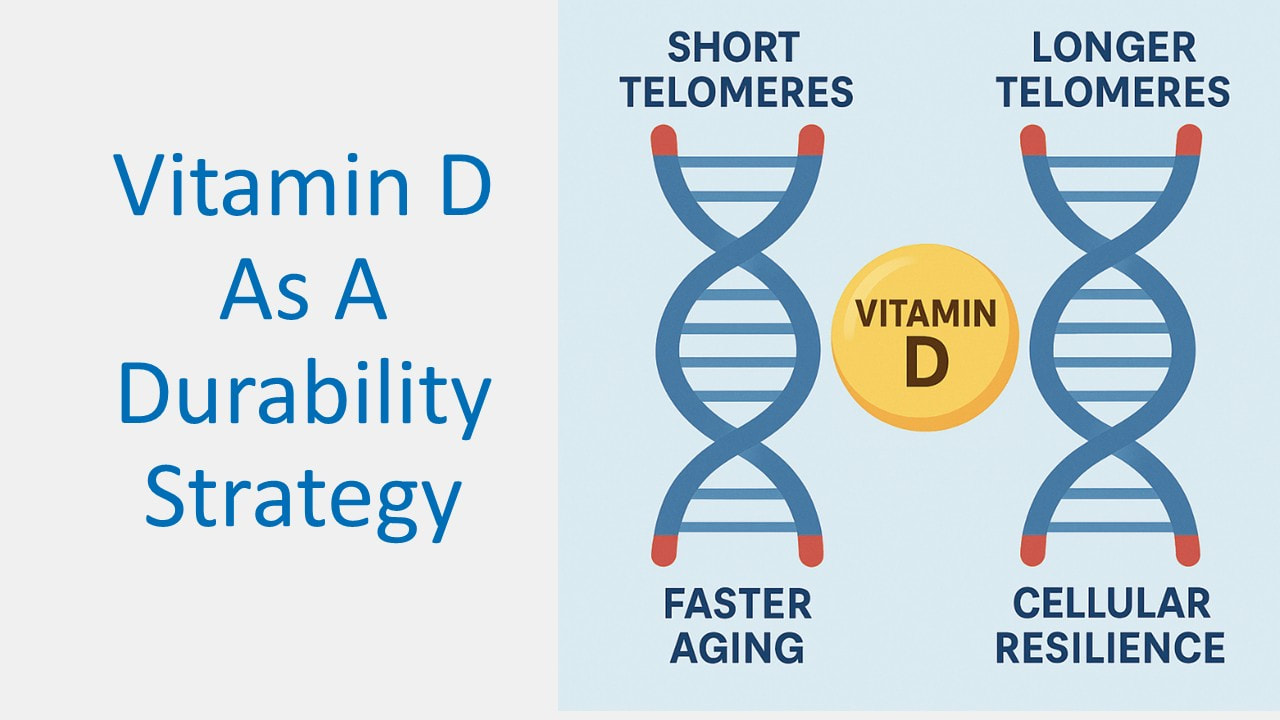 By Dr. Mark Kovacs, PhD, FACSM, CSCS Human Performance Strategist, Longevity and Durability Expert In the ongoing search for science-backed ways to extend healthspan and improve cellular resilience, a new study in The American Journal of Clinical Nutrition has made headlines for linking a common supplement, vitamin D, to potential slowing of biological aging. While vitamin D has long been championed for its role in bone health, immunity, and inflammation modulation, this new data points to another intriguing benefit: the preservation of telomere length, a well-established marker of biological aging. Let’s break down what the science is showing, what it means for your long-term health and performance, and how you might apply these findings safely and strategically in your own lifestyle. What Are Telomeres and Why Do They Matter? Telomeres are repetitive DNA sequences that sit like protective caps on the ends of chromosomes. Each time a cell divides, these caps shorten—a natural part of aging. But when telomeres become critically short, cells either stop dividing or die, contributing to tissue aging and the onset of age-related diseases. Preserving telomere length is increasingly seen as a strategy to not just live longer, but to extend the period of life spent in good health—your healthspan. In short: The Study: Vitamin D and Telomere Preservation This research comes from the VITAL trial (VITamin D and OmegA-3 TriaL), a large, randomized controlled study involving over 1,000 adults aged 50 and older. Participants were given either vitamin D3 supplements (2,000 IU daily), omega-3 fatty acids, or a placebo for four years. The researchers, led by Haidong Zhu and colleagues, evaluated leukocyte telomere length (LTL)—a marker of biological aging—at two and four-year intervals. Key Findings:
Why Might Vitamin D Help Preserve Telomeres? While more research is needed, there are several proposed mechanisms:
Important Caveats: Interpreting the Research Carefully As promising as these results are, there are some limitations that must be acknowledged:
How Much Vitamin D Is Too Much? Understanding Safe Dosing Vitamin D is a fat-soluble vitamin, meaning excess amounts can accumulate in the body and cause toxicity. Over-supplementation can lead to problems such as kidney damage, calcium imbalances, and heart rhythm issues. The recommended upper limit by the Institute of Medicine is 4,000 IU per day for adults. The VITAL study used 2,000 IU—a moderate dose that is generally considered safe for long-term use under medical supervision. Rule of thumb: Get your levels tested. The goal is to maintain a blood level of 30–50 ng/mL of 25(OH)D, which is considered sufficient for most adults. However, in my work using blood work I do like to see it higher in many individuals. Having tested blood work in more than 1000 of the highest achievers most in sports, it is valuable to personalize the approach, above and beyond just looking at minimum standards for health. We want maximum optimization. Who May Benefit the Most? A Precision Approach While broad public health guidelines apply to all, certain groups may experience even greater benefits from vitamin D supplementation when it comes to healthy aging:
The Durability Perspective: Where This Fits In At the Kovacs Institute, we define DURABILITY as the ability to sustain high performance – physically, mentally and emotionally – over time, without breaking down. It is not just about surviving longer (longevity), it is about staying strong, sharp, and capable as you age. Telomere length is one of many biological age markers we track as part of performance blood panels for both athletes and executives in our ongoing advising for some of the best in the world. Vitamin D’s potential to preserve telomere length aligns with our recommendations over the past decade. Rather than obsessing over one biomarker or one supplement, we believe in stacking multiple low-risk, high-impact behaviors—a strategy we call compounded wellness and performance. Putting It Into Action: What You Can Do Today
Here’s how to translate this research into your real life:
What Comes Next: The Future of Nutritional Longevity If further research confirms vitamin D’s role in slowing biological aging, it could reshape guidelines for preventive health, particularly in middle-aged and older adults. We’re entering an era where micronutrients meet molecular diagnostics, allowing us to make better, more personalized decisions about supplementation. But for now, the takeaway is simple: vitamin D isn’t just about bones anymore. It might be part of your anti-aging arsenal—especially if you’re strategic, measured, and science-driven in your approach. Final Thoughts from Dr. Mark Kovacs Developing Lifestyle Durability isn’t luck. It’s built day by day through small, smart decisions backed by solid science. This new telomere research offers one more tool to help you stay strong, resilient, and high-performing—regardless of age. We’re here to help you unlock the most durable version of yourself. References https://ajcn.nutrition.org/article/S0002-9165(25)00255-2/abstract Zhu H, Manson JE, Cook NR, Bekele BB, Chen L, Kane KJ, Huang Y, Li W, Christen W, Lee IM, Dong Y. Vitamin D3 and marine ω-3 fatty acids supplementation and leukocyte telomere length: 4-year findings from the VITamin D and OmegA-3 TriaL (VITAL) randomized controlled trial. Am J Clin Nutr. 2025 May 21:S0002-9165(25)00255-2. doi: 10.1016/j.ajcnut.2025.05.003. Epub ahead of print. PMID: 40409468. By Dr. Mark Kovacs, PhD, FACSM | Founder, Kovacs Institute In my work with elite athletes, Fortune 500 executives, and high-performing individuals worldwide, one of the first tools I reach for isn’t a training protocol, supplement, or sleep tracker—it’s blood work. But not just any blood work. I’m talking about performance blood panels—precision-based diagnostics that go far beyond what traditional medical labs measure. While standard labs are built around diagnosing illness, and finding major medical issues, performance blood work is focused on optimization—helping people function better, feel stronger, and perform longer. This distinction is crucial, especially in today’s high-pressure, high-stakes world, where people are burning out faster, aging biologically before their time, and navigating health advice that often feels reactive instead of empowering. In this article, I’ll walk you through:
Traditional Medical Blood Work vs. Performance Blood Panels The conventional healthcare system is designed to detect disease. If your blood markers are in the “normal range,” you’re considered healthy—even if you’re tired, inflamed, underperforming, or mentally foggy. “Normal” simply means you fit within a population average—not that you’re operating at your best. Normal is not the goal. Optimization is the goal and the individuals I work with are competing against the best in the world. By contrast, performance blood work is tailored to optimize:
 Dr. Kovacs’ Blood Analysis Background: Thousands of Panels, Elite Pedigree Over the last two decades, I’ve personally analyzed over 1,000 blood panels from elite athletes, Olympians, professional tennis players, NBA & MLB All-Stars, Professional Golfers, US Soccer greats and high-performing executives and business titans. This includes some of the most demanding performance environments in the world—training centers, corporate boardrooms, and global sporting arenas. My graduate training included intensive work inside two dedicated blood and sweat testing laboratories, where I developed hands-on expertise in biomarker interpretation, fluid loss diagnostics, and nutrient depletion under extreme stress. Later, I was honored to direct the Gatorade Sport Science Institute (GSSI)—one of the world’s most respected performance labs—where we worked with pro athletes from nearly every major sport. One of the most formative chapters in my career was my time working with Dr. Randy Wilber, who served as the Senior Sport Physiologist at the U.S. Olympic Committee for nearly 30 years and he worked across seven Olympic Games cycles. Dr. Wilber was instrumental in helping me understand the nuance and complexity behind using blood chemistry—not just for diagnosing problems, but for fine-tuning the body to compete at the world’s highest levels. The world’s best need precision and personalization in interpretation. The frameworks we now use at the Kovacs Institute are the culmination of that experience, adapted to serve not only elite athletes, but executives, entrepreneurs, and anyone committed to building durability—the ability to perform at a highest level for a long time, with energy, clarity, and resilience. Why Performance Blood Testing Matters 1. You Can’t Improve What You Don’t Measure Data is the foundation of personalization. Guesswork or general advice won’t cut it when you’re trying to improve performance in a precise, sustainable way. Performance blood panels reveal your baseline physiology, flagging even subtle imbalances before they manifest as illness or burnout. 2. Early Intervention Equals Better Outcomes Many markers like insulin sensitivity, oxidative stress, vitamin D levels, or testosterone may look "acceptable" on a traditional report but be far from ideal for your specific goals. Catching these early allows us to intervene with lifestyle, nutrition, recovery, or supplementation strategies—often avoiding medication altogether. 3. Individualized Health Optimization Two people with the same cholesterol level may need vastly different interventions depending on genetics, training load, or inflammation. Precision data allows for tailored strategies, whether you're aiming for peak sport performance, boardroom focus, or long-term brain health. Who Benefits Most from Performance Testing? At the Kovacs Institute, we’ve refined our Durability Blood Panels through years of working across three distinct populations: 1. Elite Athletes
Case Study Highlights (De-Identified)
Making Blood Work Actionable: What Happens After the Draw?
Why This Matters Now Performance blood work is no longer a luxury for professional athletes—it’s a necessity for anyone who wants to thrive in their career, sport, or life. In an era of wearable tech, data overload, and conflicting advice, blood chemistry remains the gold standard for personalized performance, resilience, and healthspan. At the Kovacs Institute, we consider it the foundation of Durability—our science-based framework for helping you live younger, longer, and stronger. Whether you’re a coach, executive, athlete, or any high performing individual, the message is simple: Test smarter. Intervene earlier. Perform longer. Essential Blood Tests for Athletes and High Achievers What to Measure. Why It Matters. How It Optimizes You. Complete Blood Count (CBC) Why It Matters: Identifies fatigue, recovery limitations, and immune stress by tracking red blood cells, hemoglobin, and white cell patterns. Athlete/High Performer Benefit: Low hemoglobin or hematocrit can crush endurance and recovery—common in overtraining or altitude changes. Comprehensive Metabolic Panel (CMP) Why It Matters: Screens hydration, electrolyte balance, kidney/liver function, and blood sugar control. Athlete/High Performer Benefit: Spot early signs of dehydration, poor nutrition, or high-protein load strain on kidneys/liver. Ferritin / Iron / TIBC (Iron Panel) Why It Matters: Tracks oxygen-carrying capacity and energy levels. Athlete/High Performer Benefit: Low ferritin is one of the most common causes of “mystery fatigue,” especially in female athletes and endurance populations. Lipid Panel (HDL, LDL, Triglycerides) Why It Matters: Evaluates cardiovascular efficiency and fat metabolism. Athlete/High Performer Benefit: High performers often assume low risk, but imbalanced lipids + inflammation = stealth heart strain. hs-CRP (High-sensitivity C-reactive Protein) Why It Matters: Detects low-grade inflammation linked to overtraining and chronic stress. Athlete/High Performer Benefit: Elevated CRP may mean you’re under-recovering—even if your training is dialed in. Vitamin D (25-hydroxy D) Why It Matters: Supports muscle repair, hormone balance, and immune regulation. Athlete/High Performer Benefit: Sub-optimal D is a known performance killer—linked to increased injury rates and longer recovery times. Cortisol (Morning) Why It Matters: Measures stress response and adrenal function. Athlete/High Performer Benefit: Spikes = burnout risk. Flatlines = overreached. Vital for mapping your load vs. recovery. Creatine Kinase (CK) Why It Matters: Direct marker of muscle tissue breakdown. Athlete/High Performer Benefit: High CK post-training is expected—but chronically elevated CK = injury risk or poor program design. Testosterone (Total & Free) Why It Matters: Governs energy, muscle mass, drive, and resilience. Athlete/High Performer Benefit: Tracking free T—not just total—is key for recovery and motivation. Declines signal overload or micronutrient deficiency. SHBG (Sex Hormone-Binding Globulin) Why It Matters: Regulates active hormone availability. Athlete/High Performer Benefit: Elevated SHBG (common with low protein intake or overtraining) makes testosterone less effective—even if labs say “normal.” Thyroid Panel (TSH, Free T3, Free T4) Why It Matters: Controls metabolism, energy, and thermoregulation. Athlete/High Performer Benefit: Low Free T3 is common in endurance athletes and can lead to slow recovery, cold intolerance, and mood shifts. Vitamin B12 / Folate Why It Matters: Critical for red blood cell production and nervous system function. Athlete/High Performer Benefit: Subtle deficiencies = brain fog, numbness, and loss of explosiveness or focus. Magnesium (RBC) Why It Matters: Key electrolyte for muscle contraction, sleep, and stress control. Athlete/High Performer Benefit: RBC magnesium > serum for accuracy. Low levels = cramps, anxiety, poor sleep, and sub-par HRV. Zinc / Copper Why It Matters: Influences hormone health, antioxidant defenses, and tissue repair. Athlete/High Performer Benefit: Low zinc = testosterone drop. Imbalance = sluggish recovery or weakened immune defense. Insulin / Fasting Glucose / HOMA-IR Why It Matters: Reflects metabolic flexibility and fuel partitioning. Athlete/High Performer Benefit: Athletes with low HOMA-IR usually recover faster and have better body composition. Elevated insulin = hidden risk. IGF-1 (Insulin-like Growth Factor 1) Why It Matters: Reflects anabolic recovery and growth potential. Athlete/High Performer Benefit: Low IGF-1 = poor training response. High IGF-1 (within range) supports lean mass and joint integrity. Homocysteine Why It Matters: Marker of methylation efficiency and cardiovascular risk. Athlete/High Performer Benefit: Elevated levels impair blood flow and recovery; optimizing this boosts nitric oxide and mitochondrial repair. DHEA-S Why It Matters: Supports resilience, mood, and hormone conversion. Athlete/High Performance Benefit: Declines with age and overtraining. Low DHEA = poor stress tolerance and reduced durability. NT-proBNP / hs-Troponin Why It Matters: Measures cardiac output and heart stress. Athlete/High Performance Benefit: Especially valuable for masters athletes and endurance sports—flagging hidden cardiac strain early. ALT/AST Ratios Why It Matters: Indicates liver stress or muscle breakdown. Athlete Benefit: Helps distinguish between healthy post-training enzyme spikes vs. problematic liver or supplement overload. ApoB / Lp(a) / Oxidized LDL Why It Matters: Advanced markers of cardiovascular inflammation. Athlete Benefit: Traditional cholesterol doesn’t tell the whole story—these identify hidden atherosclerosis risk in fit bodies. Cytokines (IL-6, TNF-alpha) Why It Matters: Inflammatory messengers triggered by intense training. Athlete Benefit: Chronic elevation = stagnation or burnout. Used for advanced load management and recovery mapping.  Introduction Every drop of sweat tells a story. Whether you’re an elite athlete chasing milliseconds or a health-conscious individual aiming for better energy and recovery, understanding your sweat is one of the most underrated and powerful tools available today. Sweat testing is a scientifically validated assessment of your body's electrolyte and fluid loss, and is no longer just for professional sports teams. It’s a longevity and performance strategy that belongs in every serious wellness plan. I have been performing sweat testing for more than 20 years. I have been fortunate to work with some of the best in sweat including at two heat, hydration, sweat and blood labs under the mentorship of two of the best researchers and professors. I spent time directing the Gatorade Sport Science Institute where we would test hundreds of individuals on a weekly basis across multiple locations including at our headquarters in Chicago and also onsite at IMG Academy in Florida. In addition, I have worked with the top exercise physiologist at the US Olympic Committee analyzing blood and sweat for Olympic athletes. Although I still work with elite athletes to dialing in personalized sweat and hydration plans for training and competition, I have been spending more time working with individuals looking to improve health, performance and longevity. In this article, I’ll explain the science behind sweat testing, the health and performance implications of electrolyte balance, and how personalized hydration protocols can dramatically improve how you feel, function, and age — both on and off the court. What Is Sweat Testing? Sweat testing is a diagnostic tool used to measure the concentration of electrolytes — primarily sodium — lost in your sweat during physical activity. In professional environments, it typically includes:
Why It Matters: Beyond the Field We typically associate hydration with elite sports, but proper fluid and electrolyte balance impacts nearly every system in the body. From cardiovascular efficiency and cognitive clarity to muscle recovery and metabolic aging, sweat testing helps uncover one of the most essential — and overlooked — components of long-term health. Longevity Impact Dehydration and electrolyte imbalances are not just short-term performance issues — they are deeply intertwined with long-term health risks. Chronic underhydration and misaligned electrolyte intake can trigger elevated cortisol levels, impair parasympathetic nervous system tone, and reduce sleep efficiency. Together, these contribute to a higher resting heart rate, inflammation, and metabolic dysregulation. These are core markers of reduced healthspan and increased disease risk (Maughan & Shirreffs, 2010).
The Science Behind Sweat Sweating is the body’s primary mechanism to regulate temperature. During physical exertion or heat exposure, sweat glands excrete fluid containing water and dissolved electrolytes. Sodium is the primary electrolyte lost in significant amounts, with typical losses ranging from 500–2000 mg per liter of sweat (Casa et al., 2000). However, these values are not one-size-fits-all. Sweat sodium concentrations vary due to genetics, acclimatization, diet, training status, and glandular efficiency. Without proper replacement, high-sodium sweaters are more likely to:
Sweat Testing for the Everyday Athlete You don’t have to be an Olympian to benefit from sweat testing. If you:
Even recreational exercisers lose between 0.5–2.5 liters of sweat per hour of moderate physical activity. Replacing this fluid without knowing your sweat composition often leads to overhydration (hyponatremia) or underhydration — both of which compromise energy and cognition. Personalized Hydration Plans After a sweat test, your hydration plan becomes data-driven. It might look something like this: This precision approach improves both your short-term performance and long-term recovery. Elite Athletes & Sweat Testing: Margins That Matter For elite athletes, milliseconds matter. A small imbalance in hydration or electrolyte levels can determine whether a match is won or lost, a record broken or missed. At the Kovacs Institute, we routinely test top professional tennis players, golfers, baseball players, and military operators. What we see consistently:
Case Study: Pro Tennis in Extreme Heat Having tested over 1000 individuals over many years, this is a representative example. Last week in Florida, a sweat test performed in 90 degree and 70% humidity, revealed that a top tennis player was losing over 2.4 L/hour of fluid and nearly 2000 mg sodium/hour. After struggling for two years with cramping issues, low energy at the end of matches and struggling to find appropriate solutions, this data provided the athlete and his team with concrete data that showed that both his sweat rate and sodium loss was significantly more than what he had thought. His previous hydration was significantly below what was needed. A new plan was provided that was highly personalized:
Special Populations: Women, Older Adults, and Heat Sensitivity Women typically sweat less in volume but can lose proportionally higher sodium due to glandular density. Hormonal cycles also affect thermoregulation, and hydration strategies should be adjusted accordingly. The need for sweat testing may even be more pronounced. Older adults have reduced thirst signals and sweat gland efficiency. Sweat testing can help identify risk factors for heat illness, especially in those on medications or with cardiovascular disease. Heat-sensitive individuals including those with autoimmune issues, chronic fatigue, or long COVID symptoms, may benefit from maintaining tight control over fluid and electrolyte balance to manage inflammation and energy levels. How Sweat Testing Works 1. Patch Testing
2. Saliva Testing
Integrating Sweat Testing Into Your Health Plan Sweat testing is not just a performance tool — it’s a health diagnostic. It can be part of:
Practical Takeaways
Getting Started At the Kovacs Institute, we offer comprehensive sweat testing integrated into our Durability Protocols — designed to enhance not just your athletic output, but your quality of life and healthspan. If you’re serious about:
Conclusion Sweat is more than a sign of hard work — it’s a diagnostic window into your internal environment. Whether you're trying to win Wimbledon or just feel better during workouts, understanding your sweat composition can improve hydration, recovery, performance, and long-term health. In the pursuit of durability and longevity, the answers are often found in the details — and your sweat may be one of the most overlooked. References
The Negative Consequences Of Cold Water Immersion On Muscle Growth: A Cautionary Tale By Dr. Mark Kovacs, PhD, FACSM, CSCS Cold Plunging & Ice Baths both fall into the category of Cold water immersion (CWI). CWI has become a go-to recovery method for elite athletes, health-conscious executives, longevity seekers and weekend warriors alike. From ice baths in NFL locker rooms to sleek home plunge tubs used by CEOs, CWI is now a symbol of resilience, recovery, and performance. But here's the truth: when it comes to muscle growth, timing matters—and CWI might be working against your long-term progress. If you're lifting to build muscle, boost strength, or slow age-related muscle loss (sarcopenia), you’ll want to pay attention. Research over the past decade—including a major 2024 systematic review—suggests that regular post-workout cold plunges may blunt your muscle gains. In this article, we’ll explore why that happens, when cold exposure is useful, and how to strategically incorporate CWI into your training regimen to maximize both recovery and results. As a performance physiologist who has worked at the highest level for over two decades with the best in the world, I have changed my personal protocol and recommendations back around 2011. This was when some early research had come out showing the impact vasoconstriction impact on the recovery timeline. These early studies have been replicated in other labs around the world and also in more practical scenarios in real world applications. The article below highlights some of the research and also I provide some practical replications. This is not a black and white issue! It has a lot to do with the following:
Why This Matters for Durability and Longevity The concept of durability—the ability to maintain high function, strength, and performance across the lifespan—is central to the philosophy here at the Kovacs Institute. Muscle mass and strength are critical components of that. Not only do they improve metabolic health and mobility, but they also are a strong predictor of longevity and quality of life (Volaklis et al., 2015). So any recovery method that compromises muscle hypertrophy or strength development deserves scrutiny—especially if you’re training to build a more durable, resilient body. The Rise of Cold Water Immersion CWI typically involves immersing the body in cold water (around 8–15°C or 46–59°F) for a short duration (3–15 minutes). The goal? Reduce soreness, inflammation, improve immunity and perceived fatigue and/or provide mental alertness. It's widely used by athletes to recover from intense bouts of training or competition. Its popularity is driven by:
The Mechanism: Why Cold Can Blunt Growth Muscle growth from resistance training is driven by a series of acute and chronic signals:
1. Reduced Anabolic Signaling Cold exposure can dampen the mTOR pathway, which is crucial for initiating muscle protein synthesis after a workout. Research by Fyfe et al. (2019) showed that post-exercise CWI decreased the phosphorylation of mTOR and p70S6K, two key regulators of muscle growth. Blunting the inflammatory process sounds like a positive in the short term, but it can have detrimental effects over the medium and longer term. The natural inflammatory process is a major step in the body having to adapt and strengthen as a result. This is know as Hormesis. It describes the adaptive response of cells and organisms moderate stress. This moderate stress results in beneficial effects and enhance resilience. 2. Lower Satellite Cell Activation Satellite cells play a vital role in muscle repair and hypertrophy. Roberts et al. (2015) demonstrated that regular post-exercise cold immersion reduced satellite cell activity over a 12-week resistance training program, leading to smaller gains in muscle size and strength compared to those who used active recovery. 3. Blunted Inflammatory Response While inflammation is often seen as a negative, in the context of resistance training, it’s an essential part of muscle remodeling. By rapidly cooling the tissue, CWI short-circuits this adaptive response, potentially reducing long-term gains. This is the one area where an inflammatory response can be beneficial and optimizing this process is a major component of muscle growth. Key Research Findings A number of high-quality studies have highlighted the downside of post-exercise CWI for muscle hypertrophy: Roberts et al. (2015) In a landmark 12-week study, participants who used CWI (10°C for 10 minutes post-training) had significantly lower gains in muscle size and strength compared to those who used active recovery. Molecular analysis showed reduced anabolic signaling and satellite cell activity (Roberts et al., 2015). Fyfe et al. (2019) This 4-week study showed that regular CWI reduced markers of muscle protein synthesis. The authors concluded that CWI may “blunt anabolic signaling responses” in young men performing resistance exercise (Fyfe et al., 2019). Fuchs et al. (2020) A meta-analysis concluded that cold water immersion reduced hypertrophy outcomes by 15–20% over time compared to training without it. The effect was especially pronounced with chronic use (Fuchs et al., 2020). No significant effect on strength levels. Yamane et al. (2006) In a comparative study, warm water immersion increased muscle size more than cold water, reinforcing the idea that temperature plays a critical role in adaptive signaling (Yamane et al., 2006). Tavares et al. (2022) This review article emphasized that chronic use of CWI immediately after resistance training impairs gains in muscle strength and mass through suppression of inflammation and protein synthesis pathways (Tavares et al., 2022). 2024 Systematic Review A systematic review published in the European Journal of Sport Science pooled data from multiple studies and confirmed that post-exercise CWI reduces muscle hypertrophy significantly compared to standard training without cold exposure (Zhou et al., 2024). Longevity Seekers: A Word on Aging, Sarcopenia, and Cold Exposure Age-related muscle loss (sarcopenia) is a growing concern for millions of adults. Preserving lean muscle mass is crucial for metabolic health, fall prevention, and overall vitality. Older adults should be especially cautious with post-exercise CWI, as they already experience blunted anabolic responses and slower recovery. In these cases, every signal matters—and anything that suppresses adaptation should be used carefully. The use of CWI should be done sparingly and under guidance of a trained professional who can personalize the recommendations based on your individual health status, goals and needs. This becomes more important as an individual ages. GLP- 1/Semaglutide/Dulaglutide Medications If an individual is on GLP-1 medications (i.e. Ozempic Mounjaro, Trulicity, Rybelsus etc), then CWI should likely be avoided. The biggest negative to GLP-1s is the muscle loss and anything that limits strength or muscle gain adds to this. If you are on these medications then other recovery based modalities should be considered.  Dr. Kovacs Strategic Recommendations for CWI Use If your goal is muscle hypertrophy or significant strength gains, follow these science-backed guidelines: 1. Avoid CWI Immediately After Strength Training Wait at least 4–6 hours—or ideally, save it for off-days or rest periods. 2. Use CWI Earlier in the Day Doing cold exposure in the morning (e.g., as a wake-up protocol) can provide mood, metabolism, and immune benefits without interfering with post-workout signaling. This may work if you provide 3 hours or more before your physical training session. This time frame allows for full re-warming to occur. 3. Cycle CWI Usage Avoid chronic use after every resistance session. Use it tactically—after especially grueling sessions or when soreness is unusually high. 4. Keep It Brief and Controlled Stick to 5–10 minutes at 10–15°C (50–59°F). Longer or colder sessions may amplify the negative signaling effects. 5. Contrast Therapy Using CWI within a Hot Water Immersion (HWI) protocol can offset the negatives due to vasodilation aspects of the hot water and the shifting from vasodilation (hot) to vasoconstriction (cold) of the blood vessels. This allows for better blood flow. 6. Consider Alternatives For muscle-focused recovery, prioritize:
Bottom Line: Don’t Freeze Your Gains Cold water immersion is not inherently bad and certainly has a place and benefit for most individuals—but context, timing and DOSE are everything. If you’re lifting to grow muscle, don’t jump straight into the ice bath. Let the inflammation signal your body to adapt. Then recover with food, rest, other modalities and smart training. By using CWI strategically—not reflexively—you can preserve its benefits without sacrificing the gains that build long-term durability. References
Interested in taking your performance, healthspan, or executive longevity strategy to the next level?
Reach out to Dr. Mark Kovacs for advanced consulting, personalized protocols, and evidence-based insights tailored to elite athletes, high performering executives, and visionary leaders. 📩 Contact now at mark-kovacs.com/contact to start building your durability advantage. Introduction Cold water immersion (CWI) has gained significant traction among elite athletes, health enthusiasts, and longevity seekers. This practice offers a myriad of benefits, from accelerated recovery to enhanced mental resilience. However, the efficacy of CWI hinges on understanding the appropriate protocols tailored to specific goals. I go back over 30 years with Cold Water Immersion. First as an athlete. I was one of the first athletes tested as part of a research study at the Australian Institute of Sport (AIS) looking at the impact of CWI on perceptions of Delayed Onset Muscle Soreness (DOMS) following heave training sessions. From those early beginnings I also worked in two research labs focused on temperature regulation. One at Auburn University under Dr. David Pascoe and also at the University of Alabama under Dr. Philip Bishop. In both labs we did studies incorporating cold therapies to monitor markers of inflammation, muscle strength/power and perception of muscle soreness. From that research background, I have been using various temperature modalities for over 20 years with elite athletes and individuals looking to improve health and longevity. Below is a summary of applied protocols based on the latest research that can help individuals depending on their goals. The Science Behind Cold Water Immersion CWI acts as a hormetic stressor & an analgesic (a pain reliver) triggering adaptive responses that bolster the body's resilience, while also reducing symptoms and perception of pain, discomfort and soreness. Key physiological effects include:
Protocols for Athletic Recovery Objective: Accelerate recovery post-exercise, reduce muscle soreness, and improve performance.
What the Research Says A 2018 meta-analysis by Dupuy et al. confirmed that cold water immersion significantly reduced muscle soreness at 24, 48, and 72 hours post-exercise. Similarly, Leeder et al. (2012) showed improvements in strength recovery and reduced DOMS with cold immersion protocols around 10–15°C. Mechanism of Action Cold exposure helps reduce tissue temperature, which lowers the metabolic rate of muscle fibers and limits the damage caused by microtears and inflammation. It also constricts blood vessels, which can reduce swelling, followed by increased blood flow when rewarming—flushing out metabolic waste products. Dr. Kovacs recommendation: Utilize this protocol 1-2 times per week after the hardest training session(s) or matches. CWI may blunt hypertrophy signaling by reducing mTOR pathway activity. Use selectively if muscle growth is a primary goal. Also, do not use this before physical training. This should only be done post activity. Protocols for Longevity and Cellular Health Objective: Promote cellular resilience, mitochondrial health, and systemic inflammation control.
Benefits Beyond Recovery 1. Brown Fat Activation & Metabolic Boost
2. Immune Function Enhancement
3. Cognitive Alertness & Mood
4. Hormesis & Stress Adaptation
Protocols for Mental Resilience Objective: Enhance mood, boost immune function, and build stress resilience. Short, controlled exposure to cold temperatures can impact the nervous system, mood, immune function, and stress tolerance. This has made CWI a popular addition to the routines of individuals across sports, business and life improvement industries. Protocol: • Temperature: 4–10°C (39–49°F) • Duration: 2–3 minutes • Frequency: 3–7x per week • Timing: Mornings or after stressful events Dr. Kovacs recommendation: Utilize this protocol 5-6 times per week in the mornings or when an energy burst may be needed. Combining this with nasal breathing protocols like Box breathing can amplify benefits. Benefits Beyond Recovery 1. Mood Elevation: A landmark paper by Shevchuk (2008) showed that cold exposure increases norepinephrine and dopamine levels—up to 200–300% in some cases. 2. Resilience Training: Exposure builds psychological toughness and reduces overreaction to future stressors, both physiological and emotional. Mental Edge Athletes and executives alike benefit from CWI’s capacity to sharpen mental acuity, reset the stress response, and stimulate BDNF (brain-derived neurotrophic factor), which supports neuroplasticity. Understanding Lower Temperature Protocols (4–9°C / 39–48°F) Exposures to colder temperatures are more intense and should be approached with caution:
Dr. Kovacs recommendation: Limit the use of this protocol to individuals who have been cleared by a physician (ideally a cardiologist) for extreme cold temperature exposure. These protocols may not be advisable for most reading this. Contrast Therapy: Combining Heat and Cold Alternating between heat (e.g., sauna) and cold immersion can enhance recovery and cardiovascular health:
Dr. Kovacs recommendation: Contrast therapy temperature protocols can provide significant benefits above and beyond just CWI. These protocol varies based on time. The goal is to spend enough time in heat to increase core body temperature and spend just enough time in cold environments to cause significant vasoconstriction. I use various contrast protocols with travelling executives and athletes. Some of the most popular are the shower protocols. 3 minutes of a hot shower followed by a 1 minute cold shower. Repeat this 4 times for a 16 minute protocol. Safety Considerations
Conclusion Cold water immersion, when applied thoughtfully, can be a powerful tool for enhancing recovery, mental resilience, and overall health. By tailoring protocols to individual goals and adhering to safety guidelines, individuals can harness the full spectrum of benefits that CWI offers. Our protocols are personalized to each individual based on their training and travel schedule to optimize the benefits based on the individual goals. For personalized guidance on integrating cold water immersion into your routine, visit www.mark-kovacs.com or contact our team for expert advice. |
AuthorDr. Mark Kovacs, PhD, FACSM is a globally recognized expert in human performance, longevity, healthspan, and sports science. A former professional athlete turned performance physiologist, Dr. Kovacs has trained world champions, Fortune 100 executives, and Olympic medalists. Dr. Kovacs has held some of the top roles with iconic brands across longevity, health, medical, wellness and sports. These include as VP of Health & Performance at Canyon Ranch (the largest resort wellness and healthcare company in the US), an executive at Pepsico/Gatorade, the head of Sport Science & Health in the NBA with the Cleveland Cavaliers and the United States Tennis Association (USTA). As a result he has been at the forefront of longevity and healthspan innovation for over two decades. He is a leading voice in longevity science, he bridges elite athletics with cutting-edge health optimization—helping high performers live younger, longer, and stronger. ArchivesCategories |
|
© Mark Kovacs. All rights reserved. |


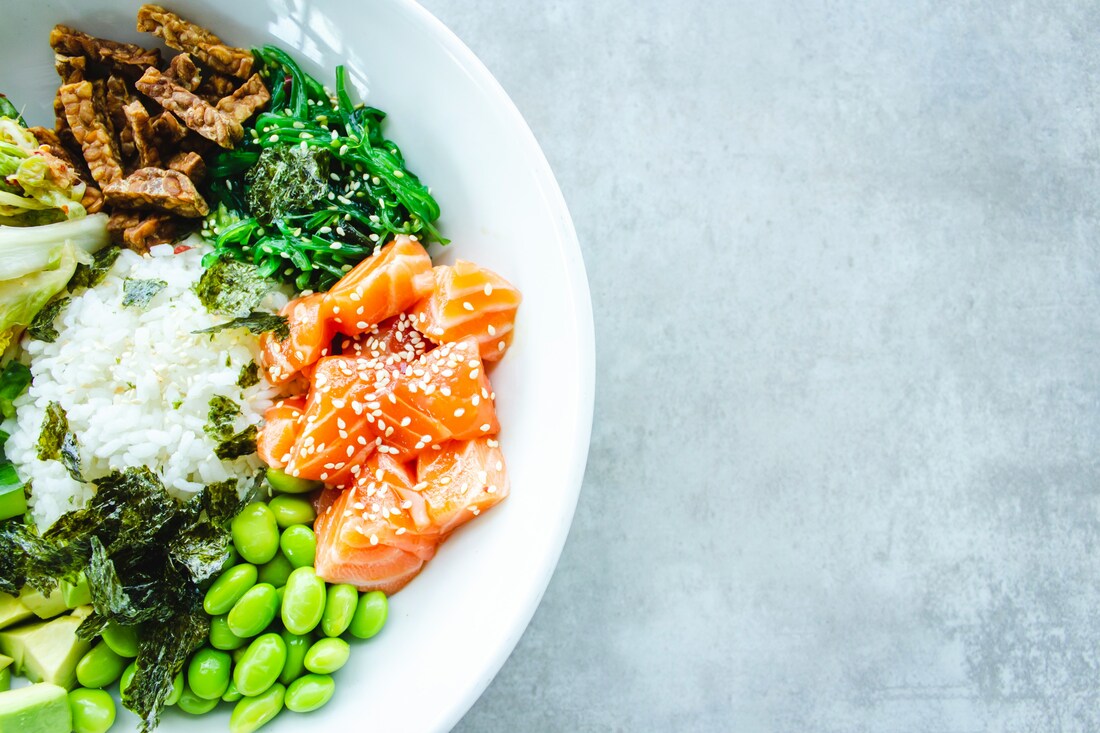
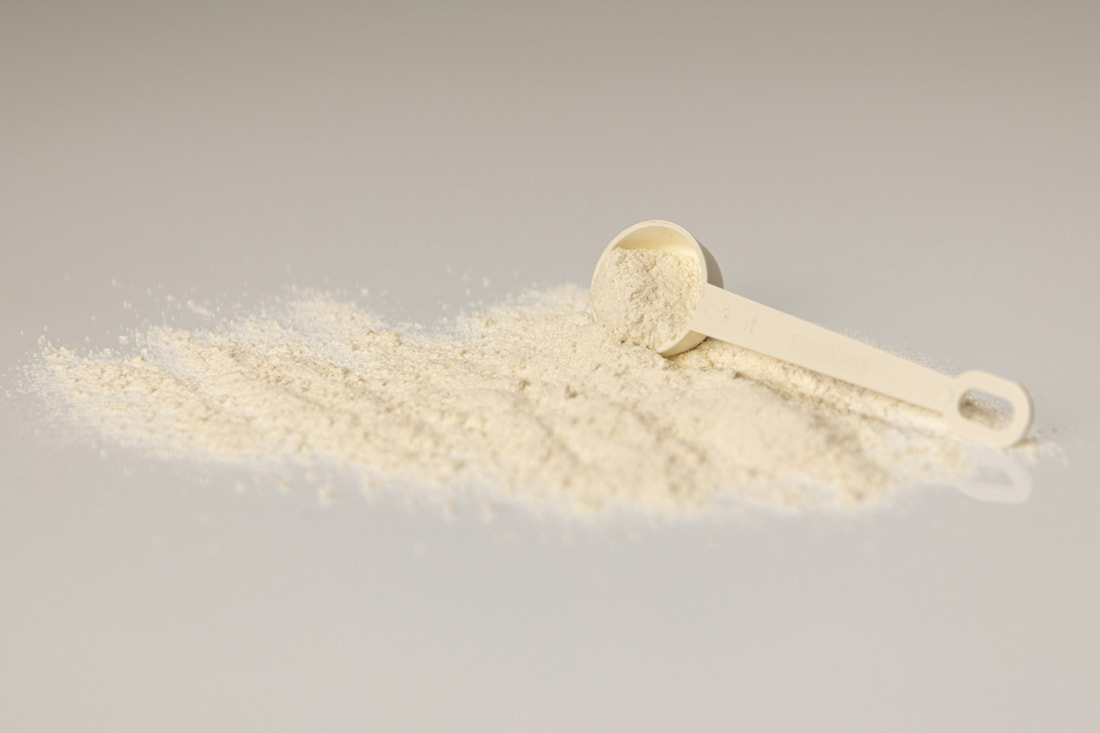
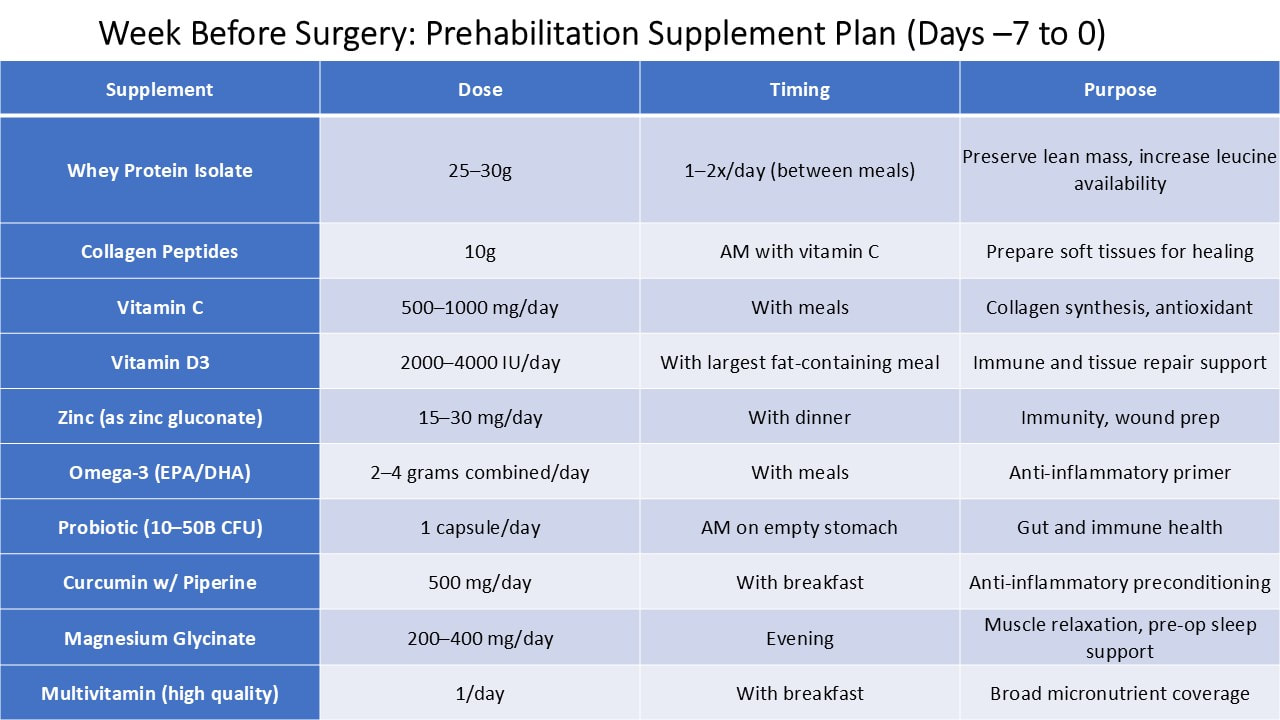
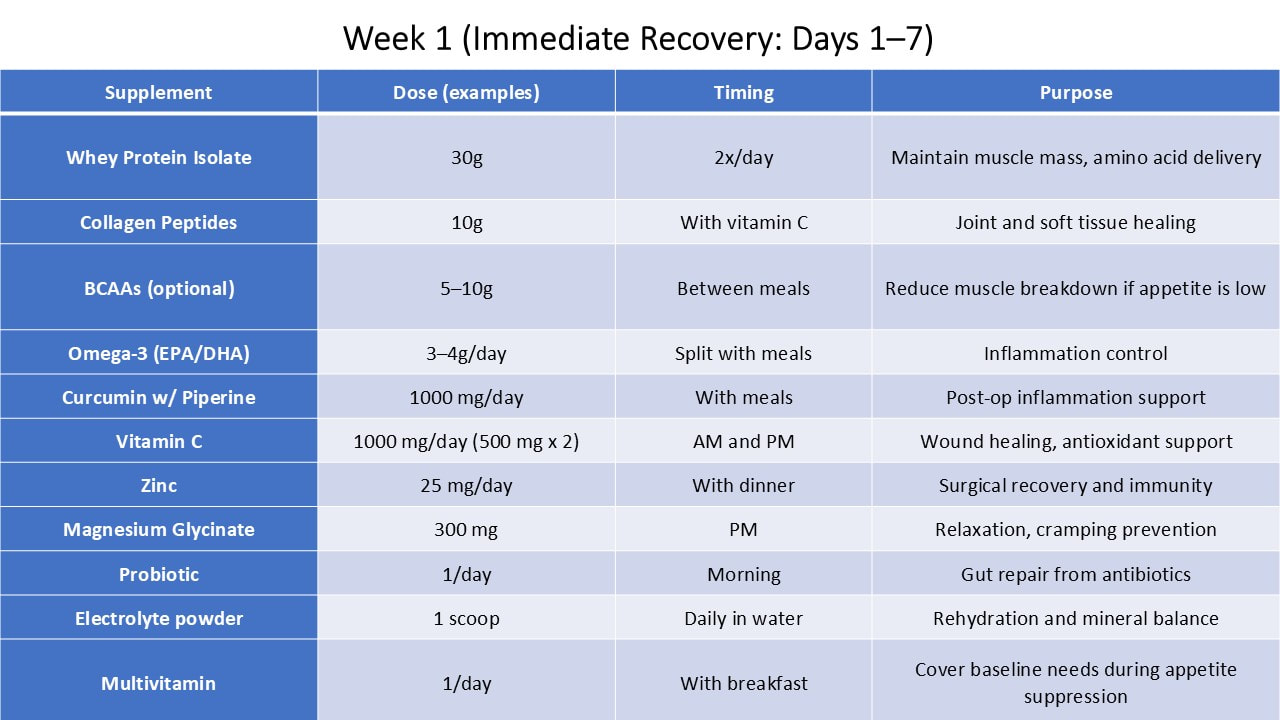
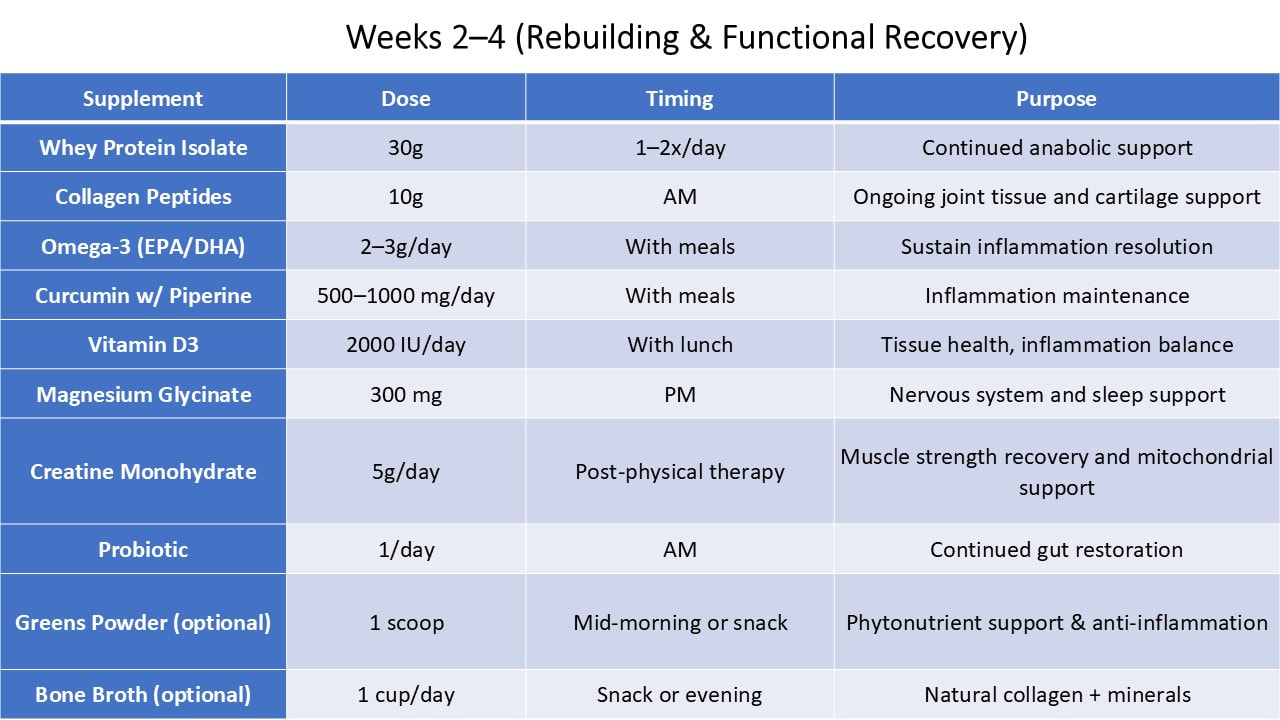
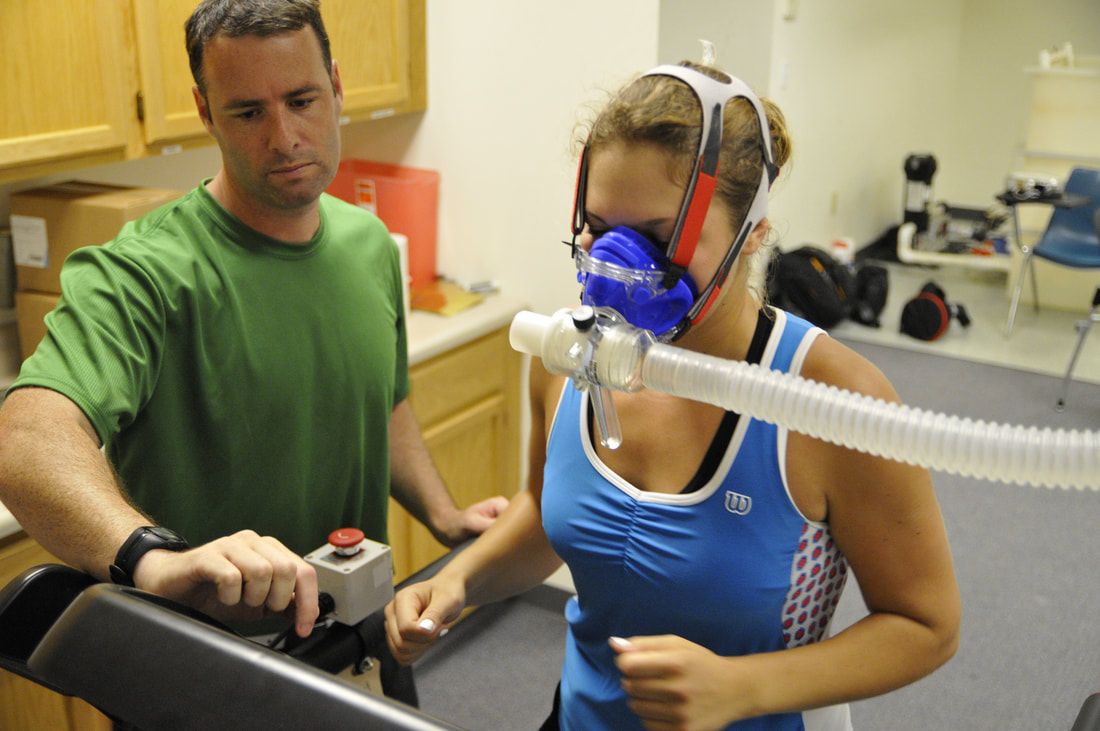
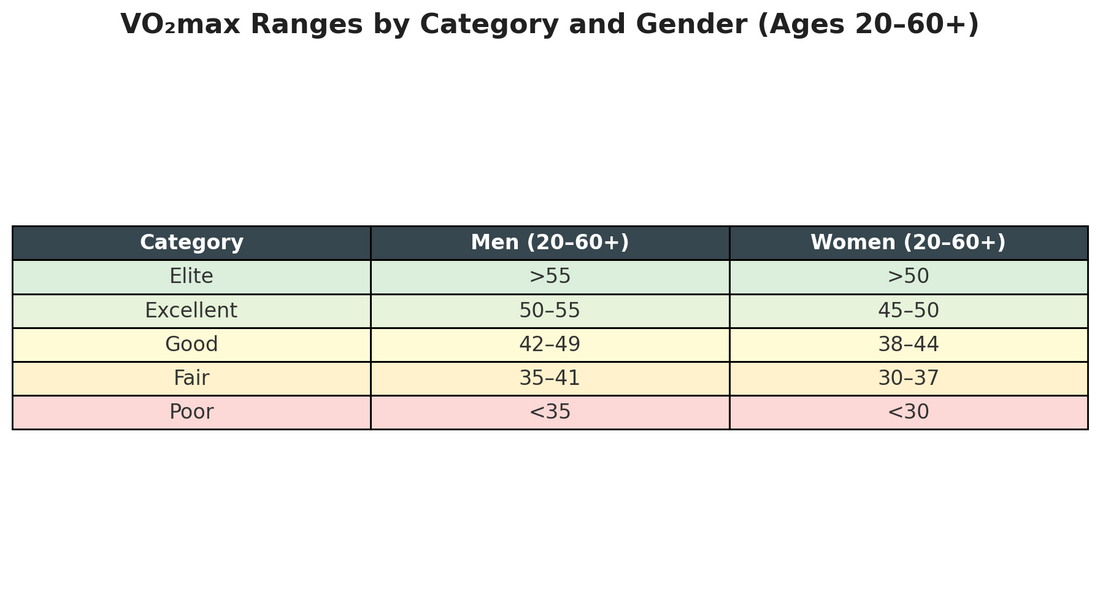


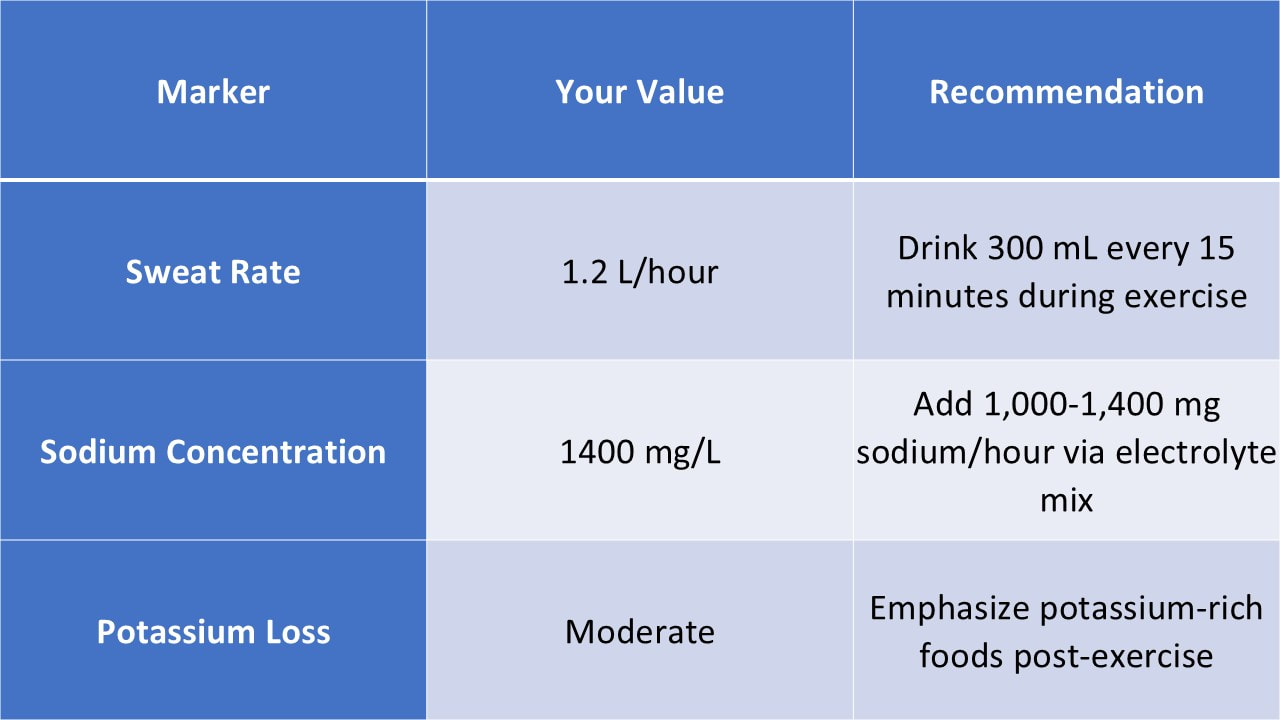


 RSS Feed
RSS Feed